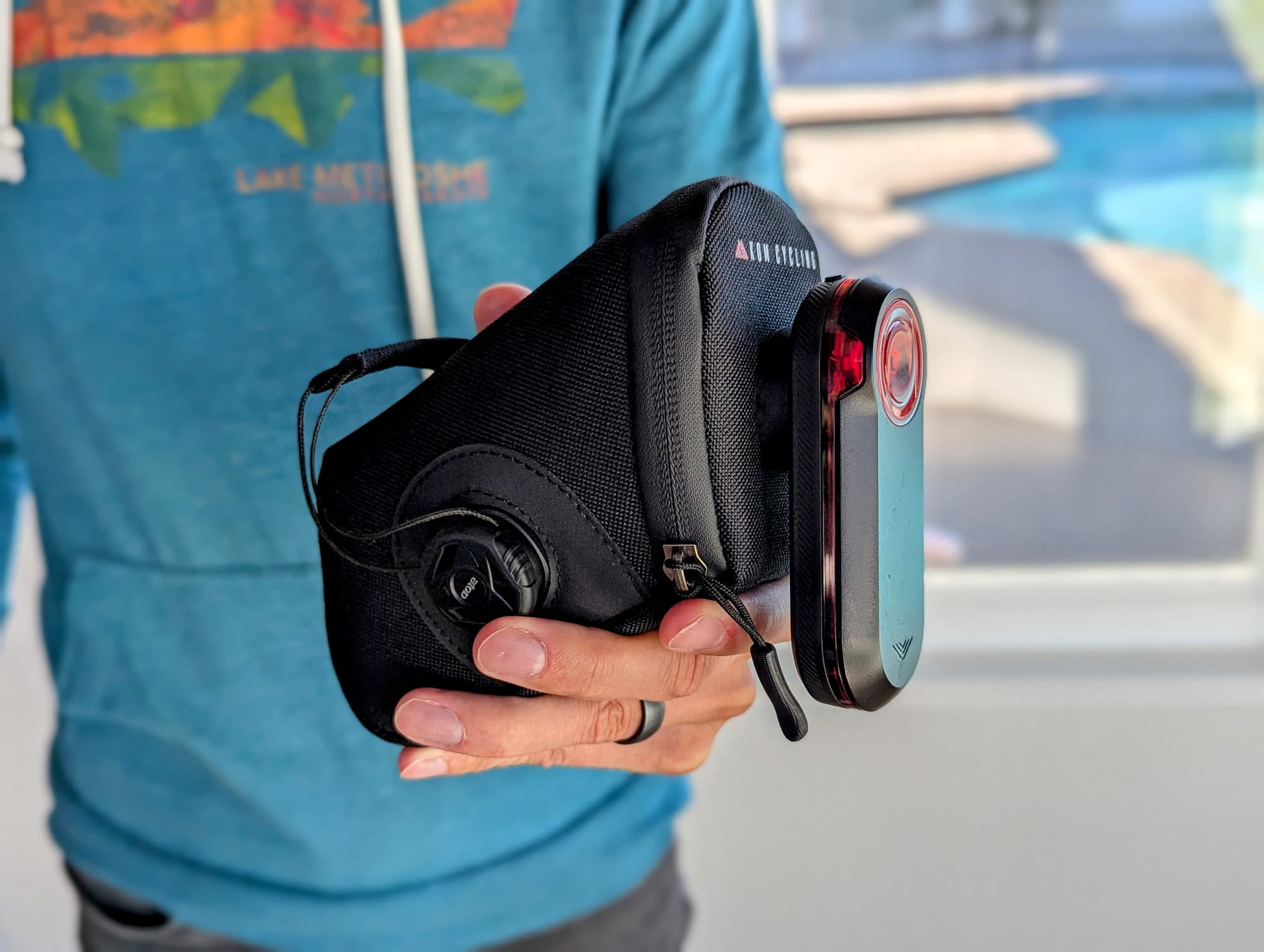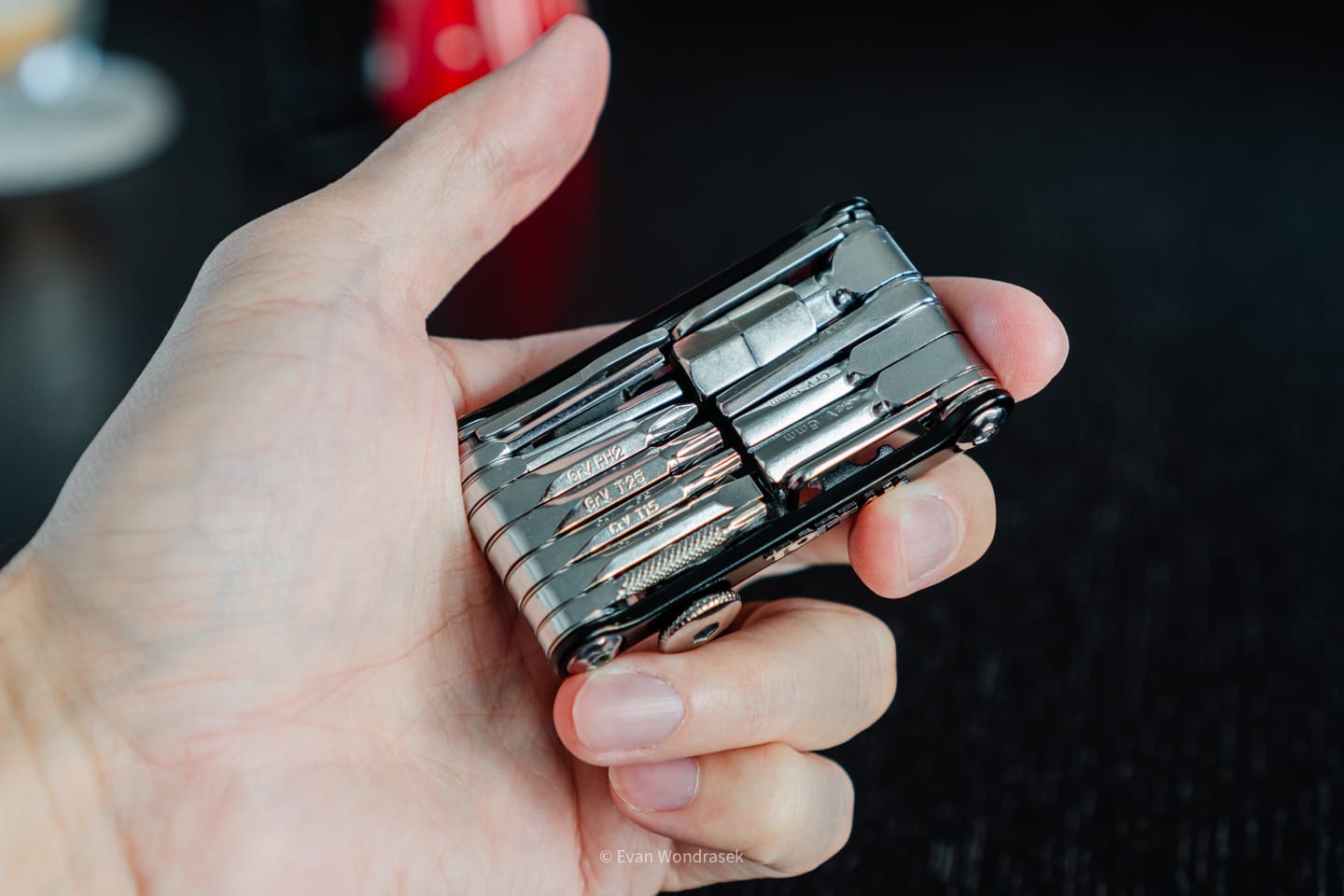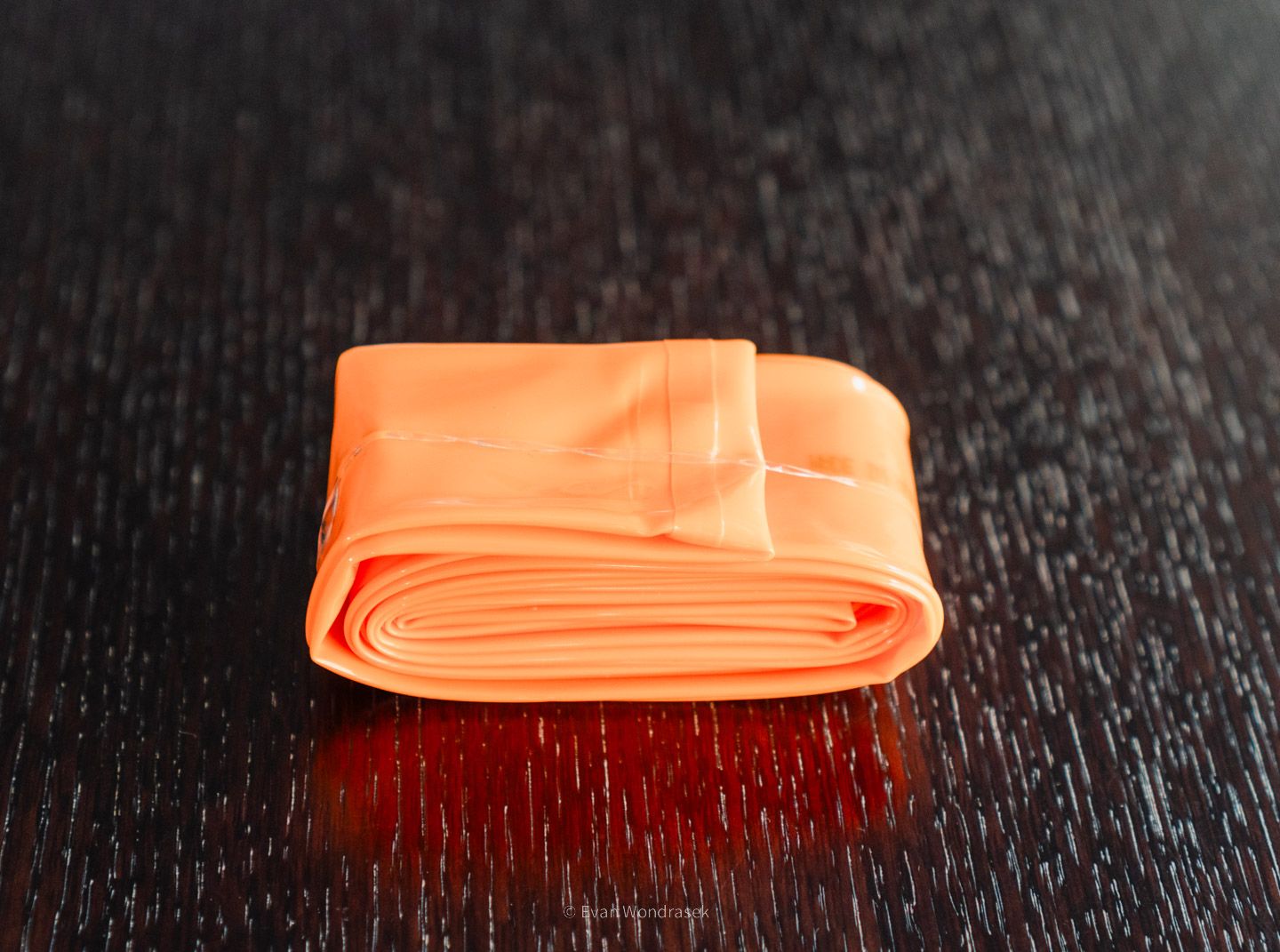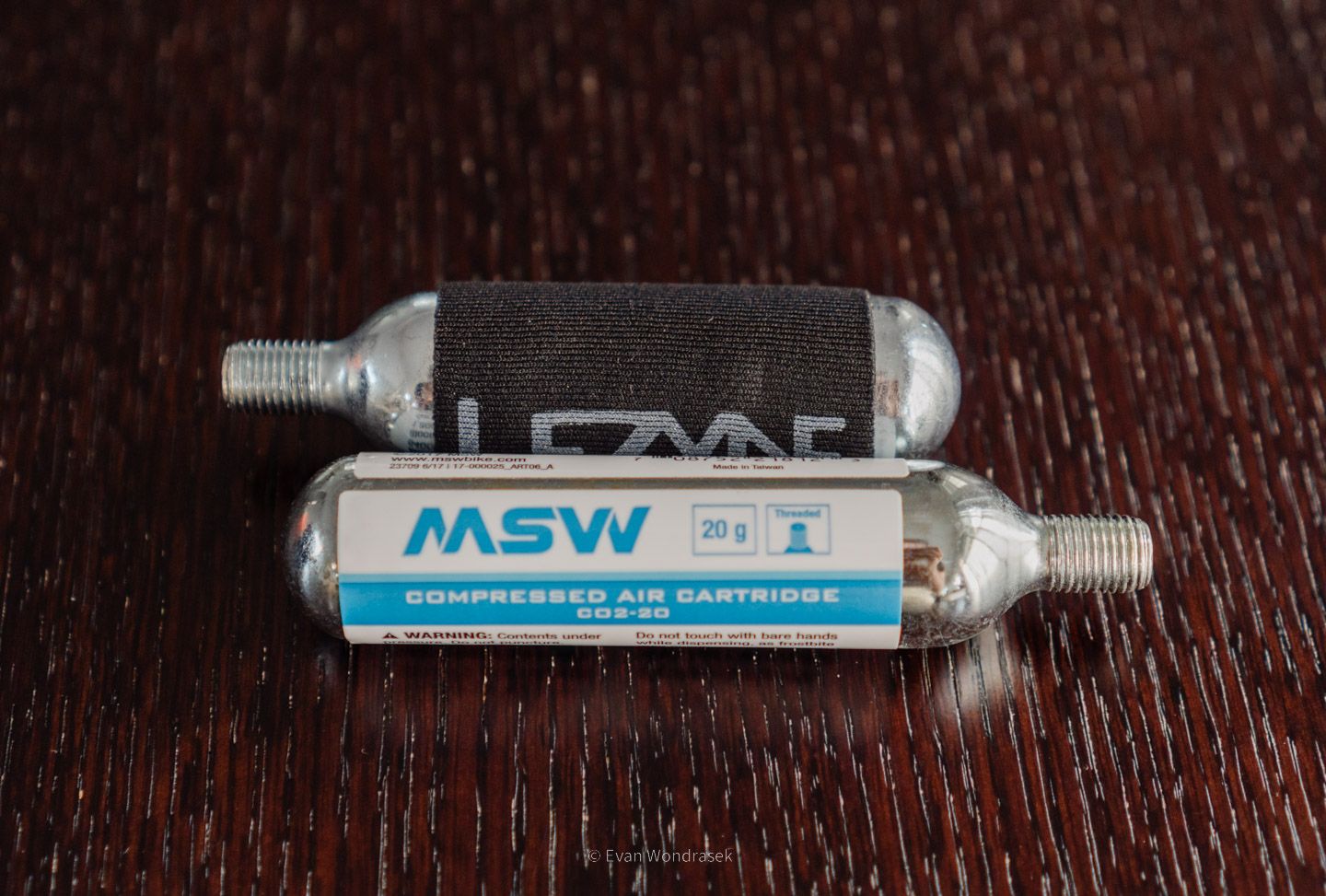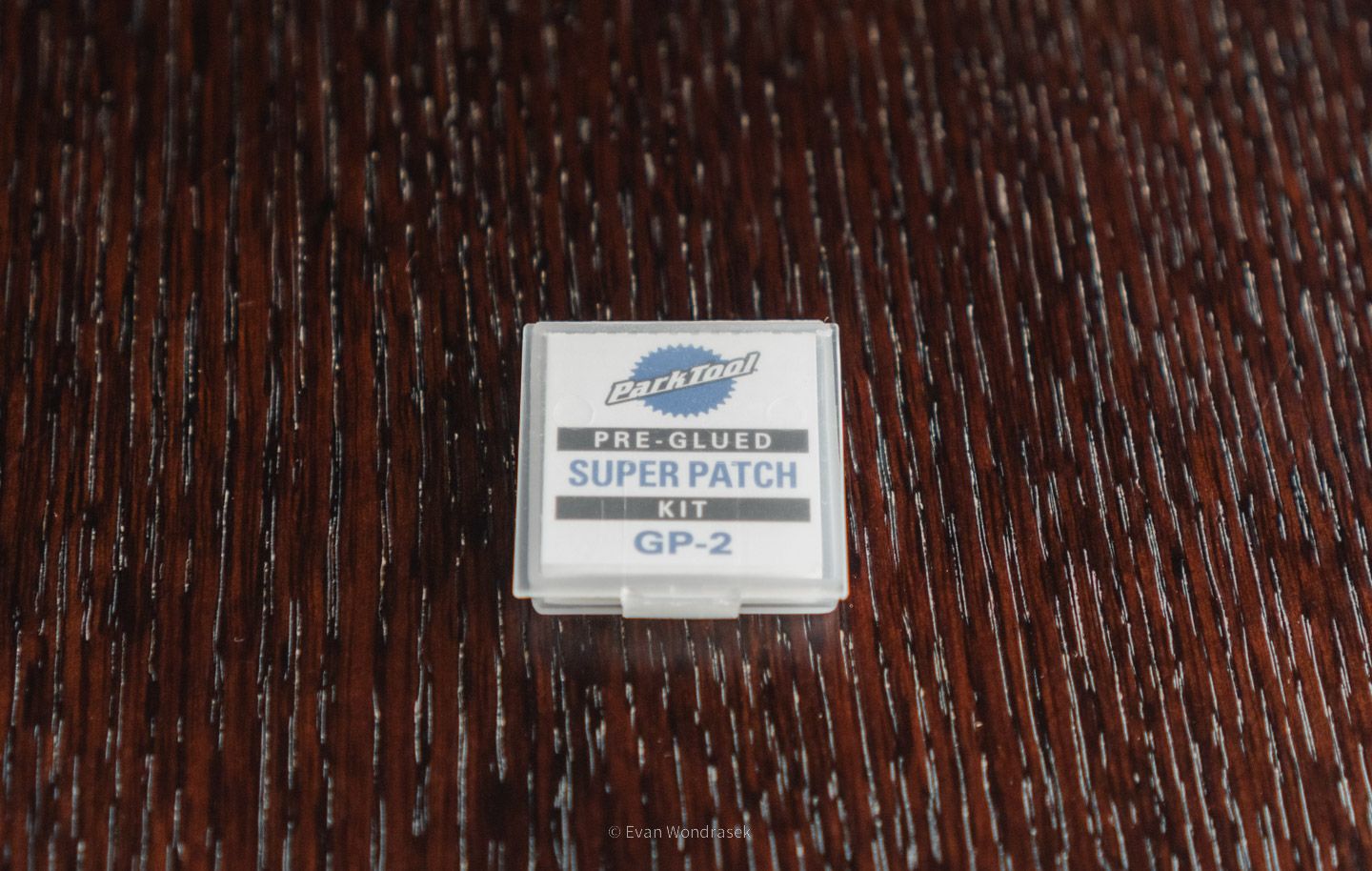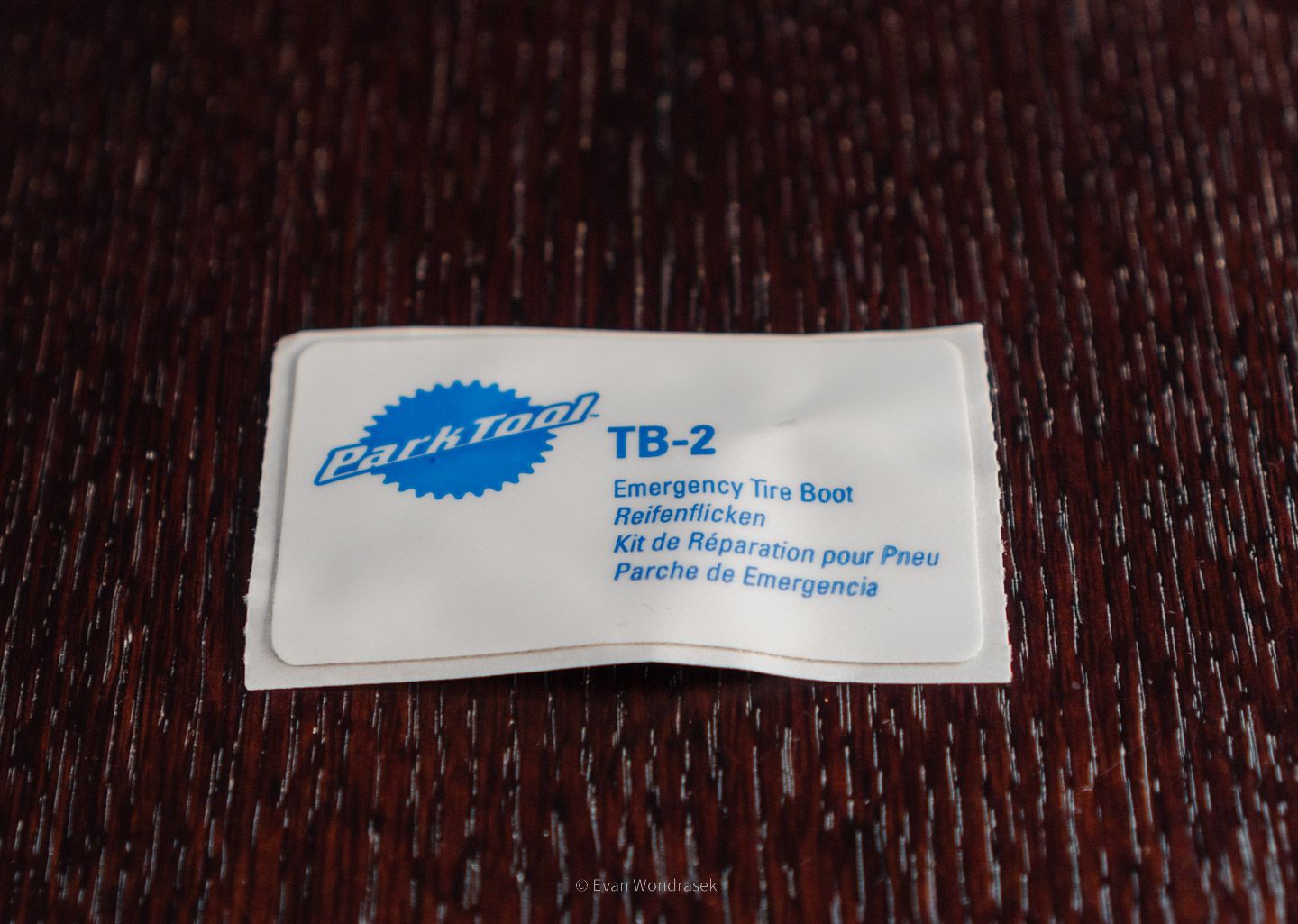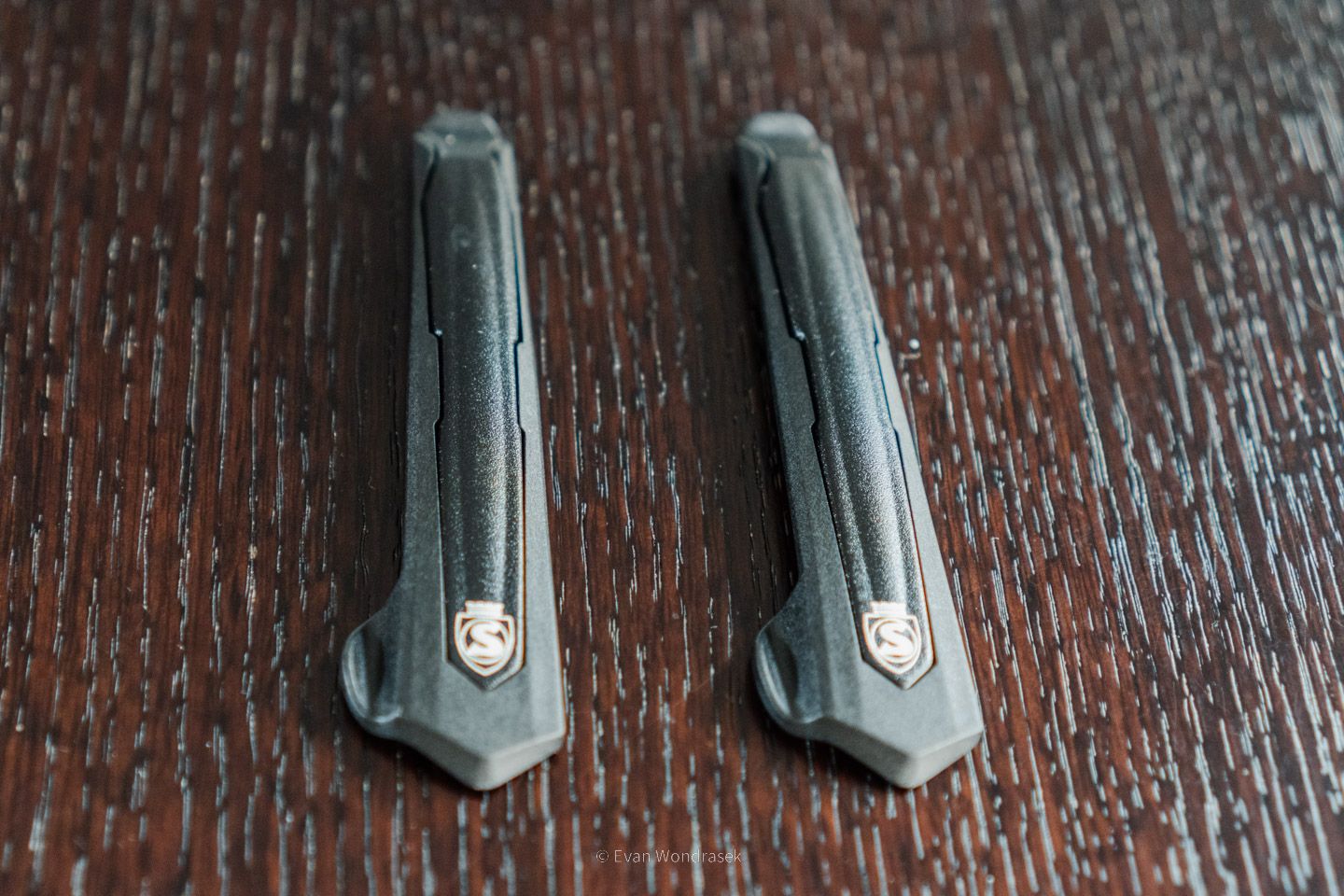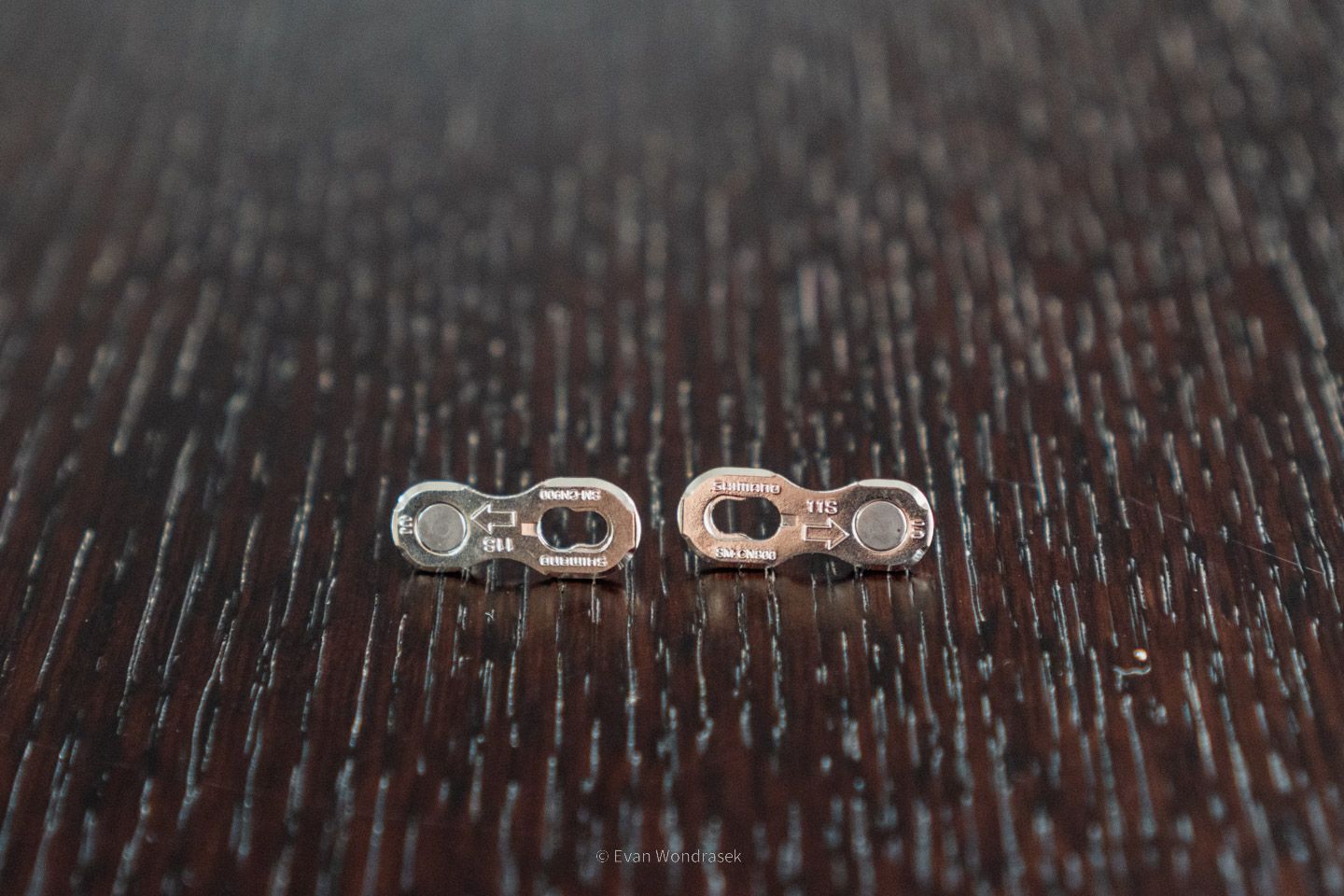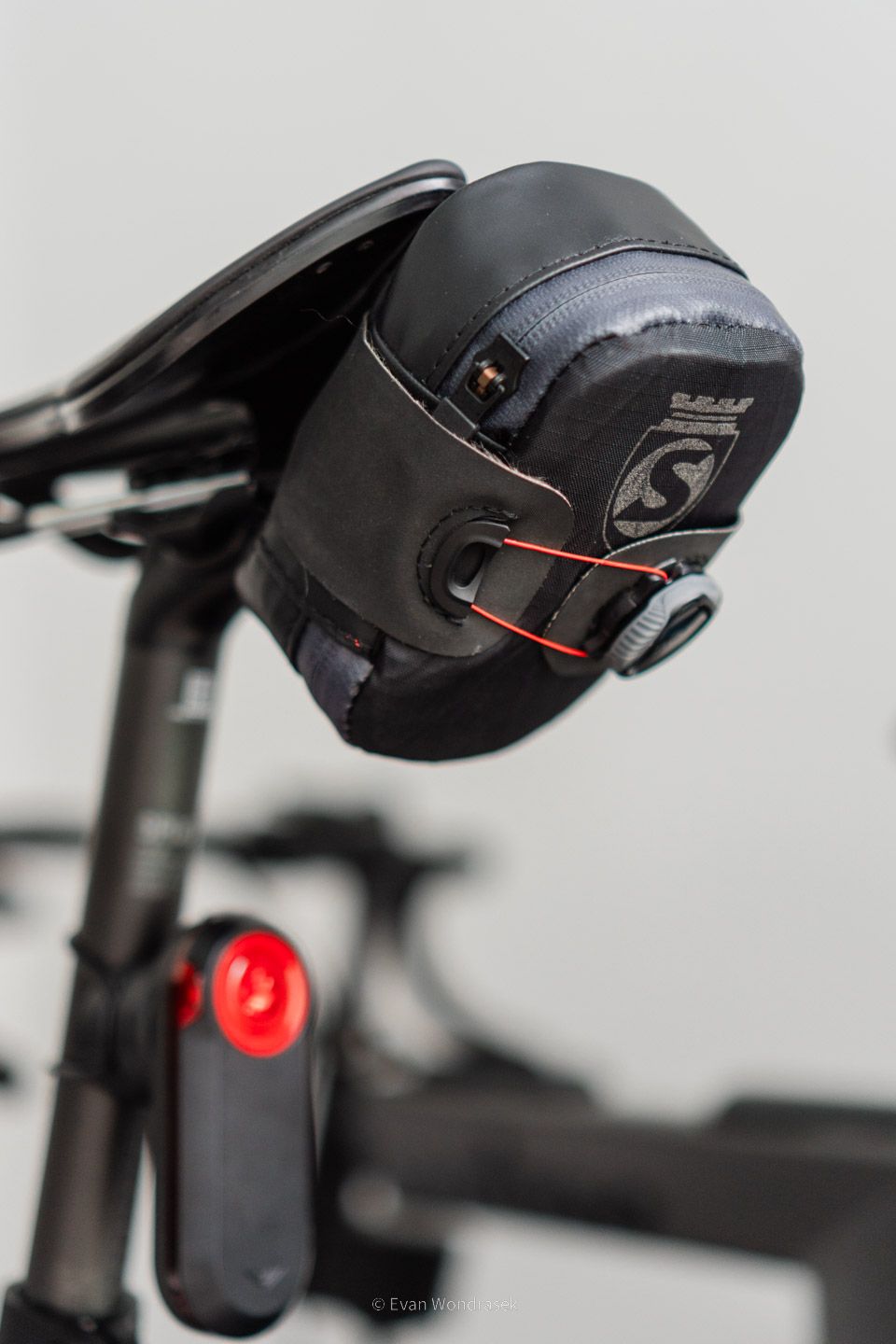Q&A: What do you carry in your road bike saddle bag?
In this Question and Answer series post, I cover the items I include in my minimalist road bike saddle bag to deal with simple roadside repairs.
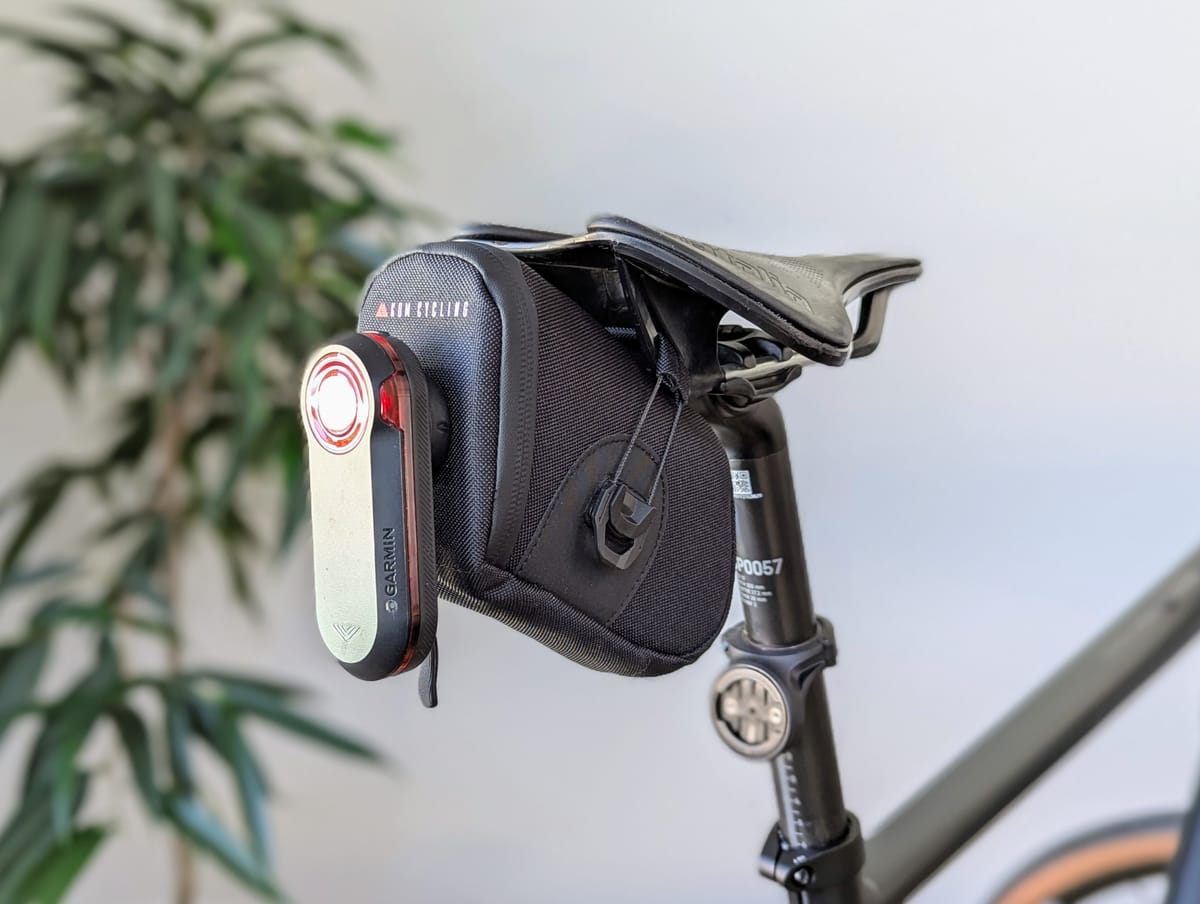
First, a little about me as a cyclist to properly set expectations here: I've been an regular indoor cyclist since 2018, but now that I work at Zwift, I usually do one 14-mile outdoor group ride once a week with my coworkers (which is awesome) with some occasional solo rides thrown in every once in awhile. I ride a endurance road bike with inner tubes (although might go tubeless one of these days). I'm probably on the high end of amateur at best, but I spent a decent amount of time researching what to carry in my saddle bag and have incessantly picked the brains of my coworkers who are much more serious cyclists than me.
So, here's what I carry when I'm out riding!
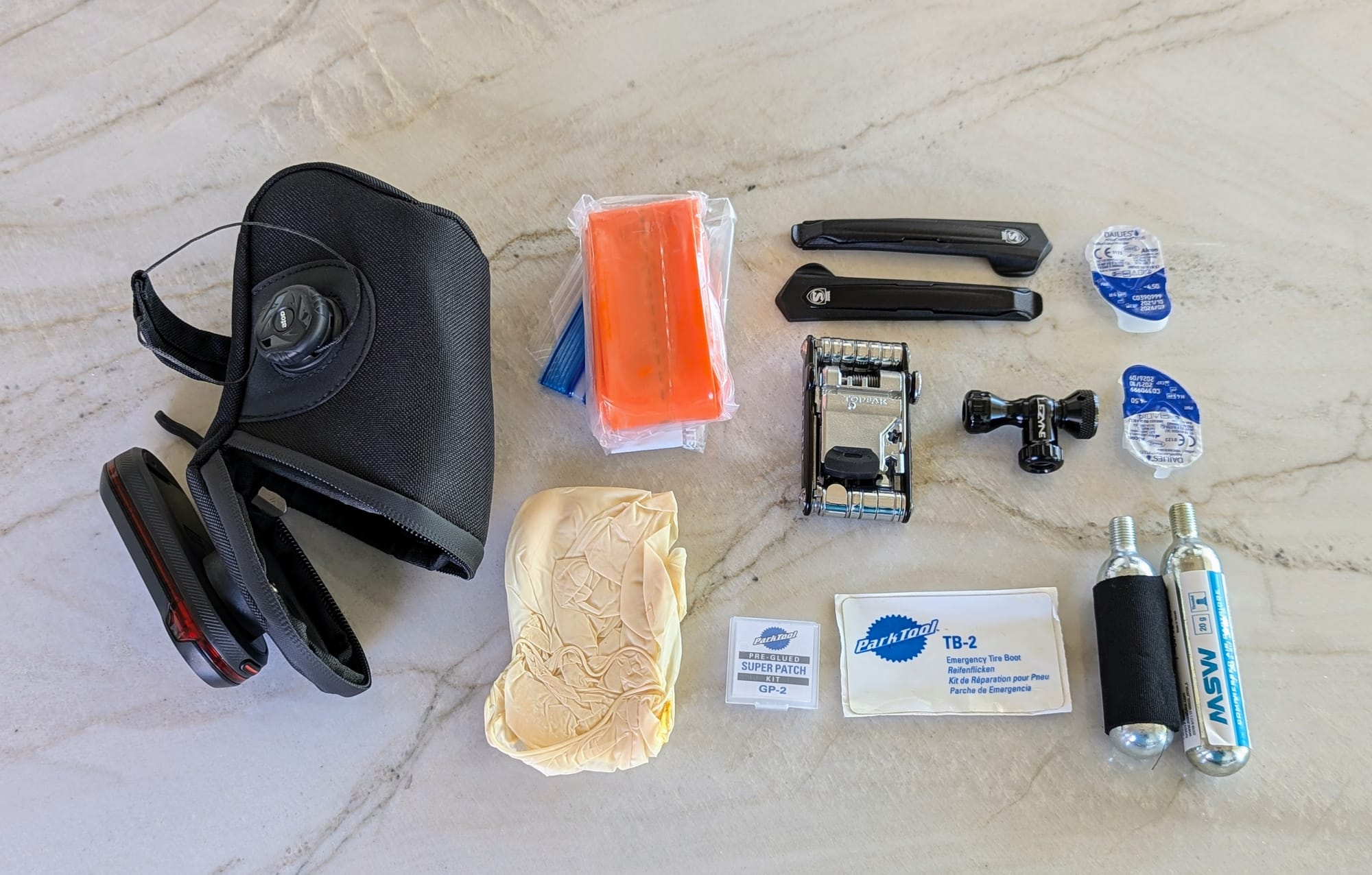
Saddle Bag
I wanted a small, low-profile saddle bag that was large enough to carry just the essentials, noting that my longest rides thus far are around 40 miles (and I'm willing to call an Uber or my wife if I have a more serious issue). The KOM Cycling Saddle Bag was just big enough to fit the things I wanted to carry, and the BOA-like closure cinches up nice and tight so the bag doesn't move at all while I'm riding.
I previously used the Silca Mattone seat pack, which was also great, but I switched primarily because the KOM Cycling saddle bag has a built-in mount for my Garmin Varia radar tail light. If you're unfamiliar with these, radar tail lights work like a normal tail light (i.e. they have a bright red light that can blink among other things), but they use radar to warn you of traffic behind you. Paired with a bike computer mounted to your cockpit with audio alerts, it's is an incredible safety net and has made me feel so much safer while riding on the roads that I honestly will never ride without one at this point.
So why did I switch? I had my radar tail light semi-permanently mounted to my seat post via its mounting kit which was great, but then I recently bought a bike repair stand and wanted to mount my bike by its seat post for maintenance which was cumbersome with the radar tail light mount in the way. The KOM Cycling bag was a perfect solve for this: it was almost exactly the same storage volume as the Silca seat pack (0.4 L for the KOM bag vs. 0.41 L for the Silca bag) and had a built-in mount for Garmin Varia radar tail lights. This completely freed up my seat post for easy mounting, while likely improving the performance of my radar tail light by being higher up over my rear wheel.
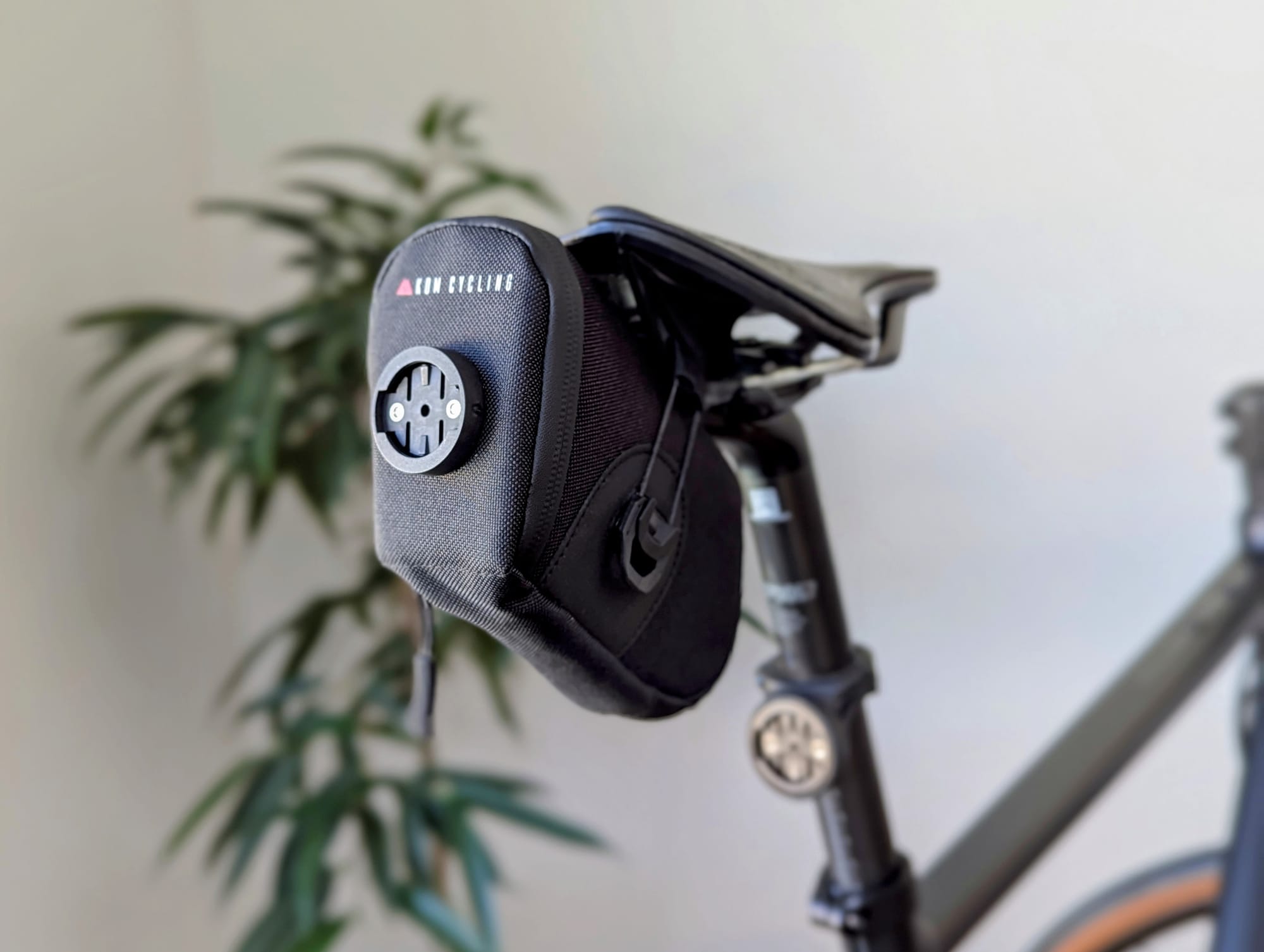
Overall, I'm super happy with the KOM Cycling saddle bag so far: I was able to fit everything I had in my Silca seat pack easily, and even though the KOM bag was 0.01 L smaller in volume, the way it's shaped actually left me with slightly more open space than I had with my Silca bag. It's more of a jumble inside that the neatly-rectangular Silca bag, but given how small both of these bags are, the reality is that I'd be taking most things out if I really needed to get at something either way.
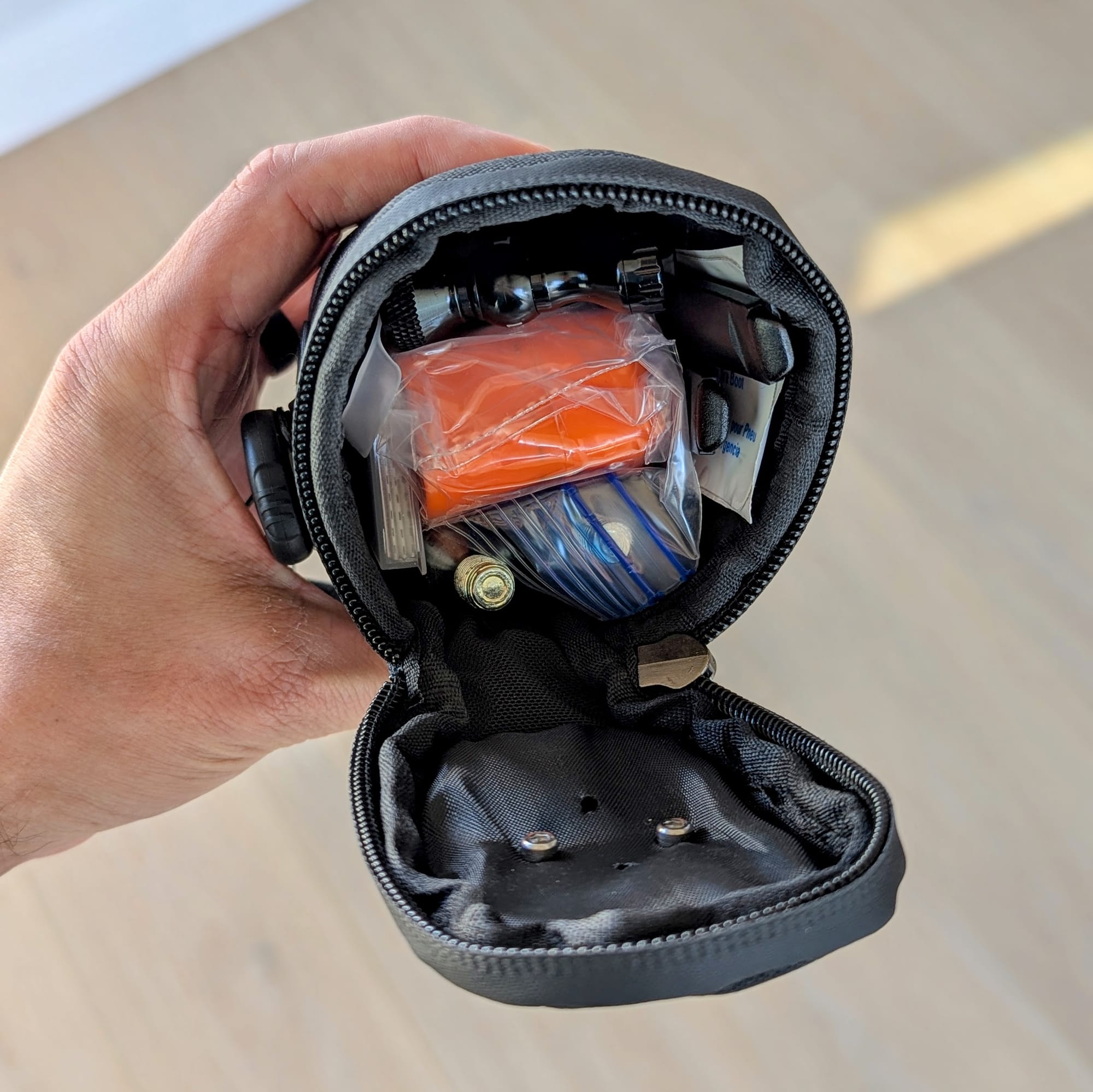
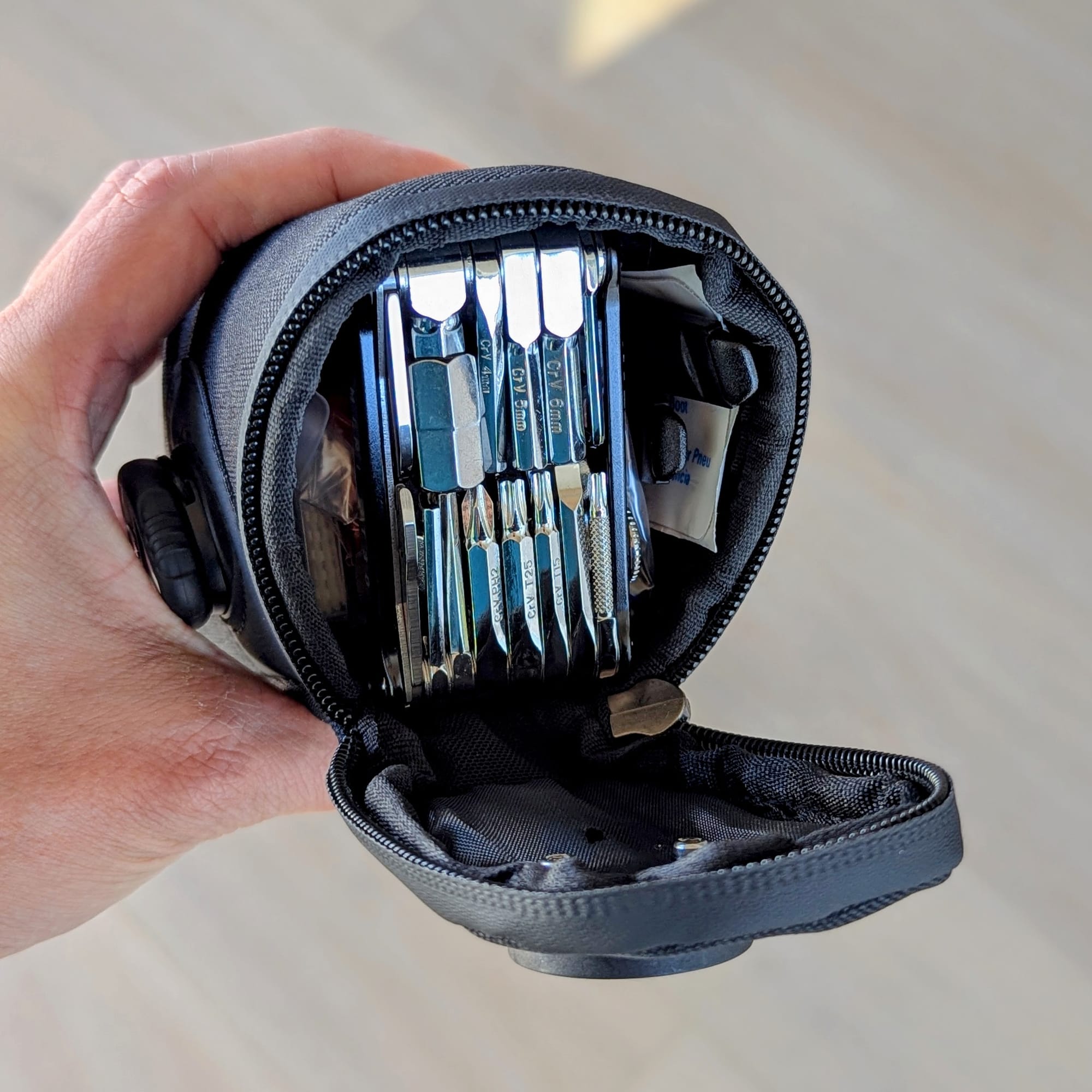
Loading up my KOM Cycling saddle bag. It's a bit of a jumble, but easy enough to get at everything.
And there were two other unexpected benefits: The KOM bag being smaller and more cylindrical fits my bike's silhouette better in my opinion (and someday if I ever stumble into a wind tunnel, maybe I'll find that it shaves off 0.01 Watts or something at 30 mph), and the straps for the BOA-like like closure are thinner and significantly easier to maneuver through my saddle rails, making it much easier to remove and re-install.
Multi-Tool
With 30 tools, the Topeak Mini PT30 is probably a bit overkill for the types of roadside repairs that I'm likely to do myself (let alone be capable of dealing with without first consulting a YouTube video). But, it had great reviews, clever design, a small and flat form factor (which was the perfect size for my saddle bag), and contained the tools I was most interested in carrying:
- Basic Allen wrenches in many sizes
- Chain tool, which lets you open up a chain by forcing out one of its pins and then re-assemble the chain by forcing in a new pin once you've repaired it
- Chain hook, which keeps your broken chain held together while you repair a link - especially helpful if you're riding solo
- Quick link removal tool
I previously carried the Topeak Mini 20 Pro which was also an extremely capable tool, but after I moved to a new waxed chain and installed a quick link for easier chain removal, I wanted to carry a multi-tool with a quick link removal tool which the Mini 20 Pro didn't have. Sure, it's probably possible to remove quick links without a tool, but I'd rather not be messing around any more than I have to if I'm on the side of the road doing a repair.
Plus, the PT30 has a few other improvements over the Mini 20 Pro: An improved chain tool with a second fence for better stability, a tire plug tool and knife (because, inevitably, I'm probably going to move to a tubeless setup), and a more secure spot to store spare quick links within the multi-tool itself. Granted, I also stored my spare quick links in my Mini 20 Pro, but they were floating around loose in there whereas in the PT30 they're perfectly snug and held in place by the disc brake spacer.

Topeak makes a bunch of mini tools in various sizes, so you can get more or less depending on your space constraints.
Inner Tube
I ride a road bike with inner tubes, so I decided to carry one spare tube just in case I had a puncture that I wasn't able to repair (more on tube repairs later). Sure, I have two wheels on my bike, so I'm banking that I'll only ever have one un-repairable flat tire on any given ride – otherwise, I'm calling for help.
Even though they cost significantly more, I decided on a TPU tube from Tubolito rather than a much cheaper butyl or latex tube simply because TPU tubes take up significantly less space (seriously, check out the size difference). I've seen a few examples of folks damaging their TPU tubes when inflating them in the same way they'd inflate a butyl tube, so it's worth checking out an example mounting video before using these for the first time.
Some folks I know who ride tubeless still carry a spare tube as well: just in case they have a flat that's severe enough that it can't self-seal, they could throw a tube in the tire and use that to limp back home.
I carry my spare tube in a Ziploc bag within my saddle bag, both to protect the tube from potential rubbing against other items in my saddle bag, and because the Ziplog bag itself may be handy in the event of a roadside repair.
Tire Inflator
In the event of a flat tire, I decided to carry two CO2 canisters instead of carrying a small bike pump mainly because of their smaller size (and I didn't want to give up one of my two water bottle mounts to mount a bike pump). I went with the Lezyne Control Drive CO2 Bicycle Tire Inflator because of its small form factor and positive reviews, and it came with one CO2 cartridge and a neoprene CO2 cartridge sleeve (which is great, because CO2 cartridges can get pretty chilly when you're inflating a tire).
Now, let's address the math problem here: My bike has two tires, but I'm carrying one spare tube and two CO2 cartridges. As I explained earlier, my rationale with carrying only one spare tube is to minimize the size of my saddle bag while betting that I'll only have one un-repairable punctured tube during a ride. But, in the event that my other tire gets a flat as well, I'm betting on it being repairable, so the second CO2 cartridge is for re-inflating the repaired tube. Time will eventually inform me as to whether I've made the right decisions here.
Tube Repair
For a small tube puncture, I have Park Tool GP2 Pre-Glued Super Patch Puncture Repair Kits in my saddle bag. These things are tiny and thin - about the size of a US postage stamp - and even though I probably only need one or two in my saddle bag at any given time, I opted to carry the whole pack of six because I had the space (and hey, maybe I'll be able to help out others while I'm on the road). Since these are pre-glued, you can just prep the damaged tube using the included sandpaper, peel the patch off of its backing, slap it on, and you're (probably) good to go.
Tire Repair
In the event that my tire gets seriously damaged, I carry one Park Tool TB-2 Emergency Tire Boot, which is a thin membrane with adhesive on one side that you can stick to the inside of your tire so that your tube doesn't extrude from a gash. This is small and thin – smaller than a credit card – and took up almost no space in my saddle bag. That being said, a lot of more seasoned cyclists I know said that they've just used a folded-up dollar bill to patch up tire gashes, so this may be overkill for most situations.
Tire Levers
I know some folks can remove and replace tires without tire levers, but I nonetheless respect the benefit of the right leverage and the proper application of strength. These Silca Tire Levers Premio are small, look sharp (because I mean, what are you even doing if you aren't showing off your tire levers when repairing a flat), and I liked that they have nylon contact points so as to not damage carbon fiber wheels (which I don't have, but hey, someday!).
Chain Repair
In the event that my chain breaks while out on a ride, I carry one set of SHIMANO 11 Speed Chain Quick Link Connectors, so I can use my multi-tool (covered earlier) to remove the broken link and replace it with this quick link.
I store my spare quick links within my multi-tool, which takes up slightly less space but also means I'm less likely to have to hunt for them in my saddle bag.
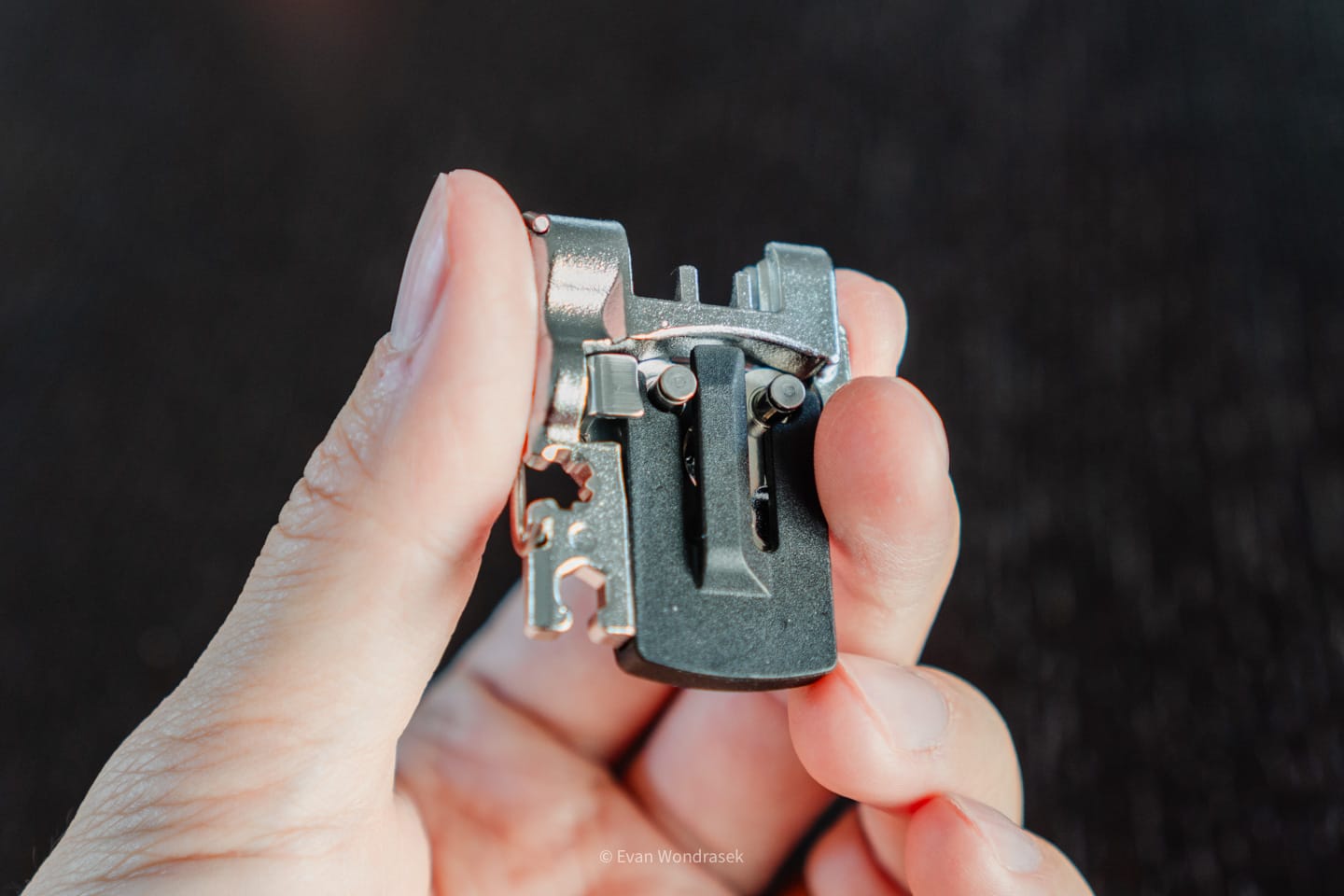
You'll have to get appropriate quick links for your type of chain - in my case, I'm running a SHIMANO 11-speed chain, but similar products are available for other chain manufacturers.
PPE
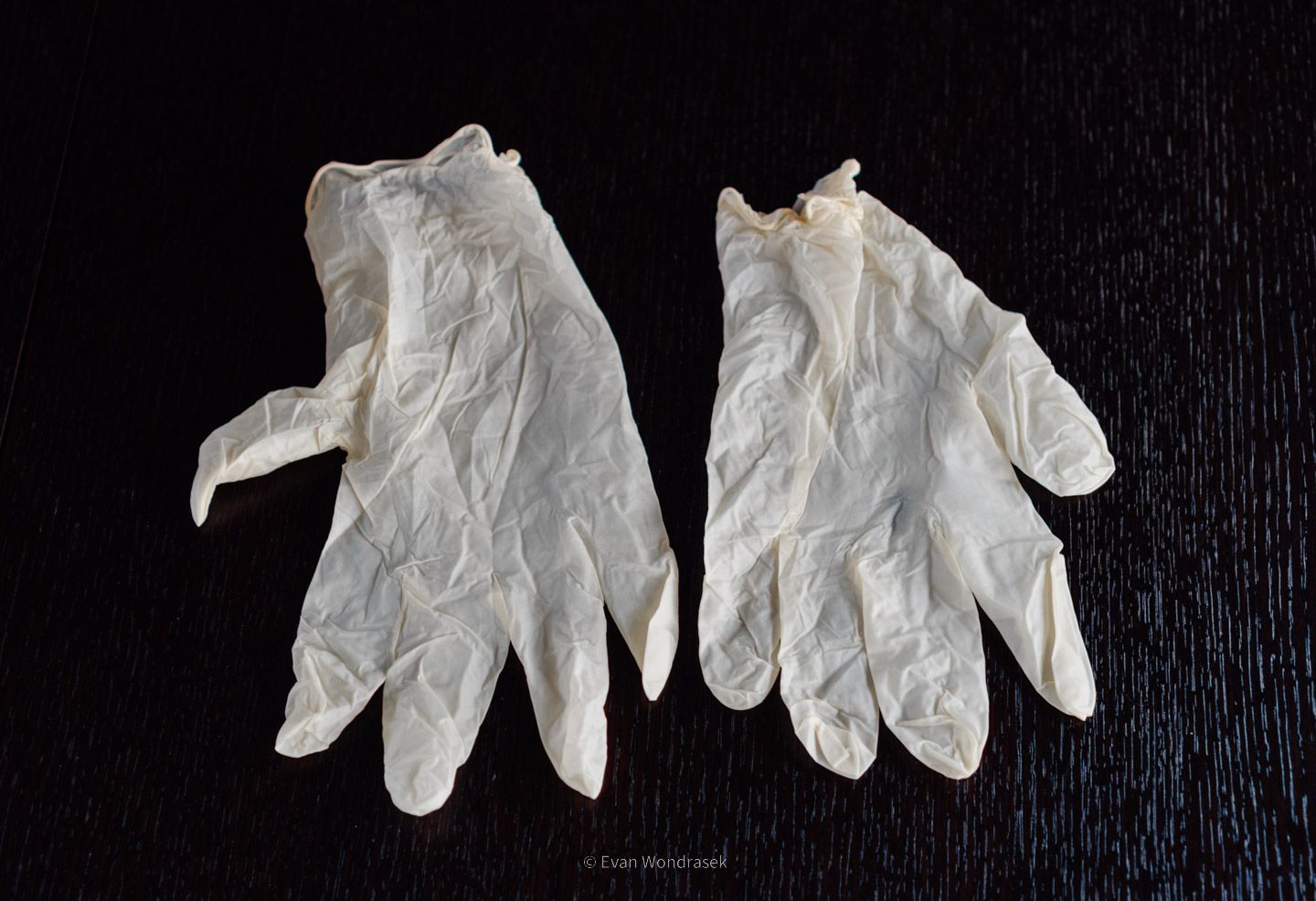
Latex Gloves (2x)
Ok, nothing fancy here: latex gloves take up almost no space, and I figured there are plenty of situations where I might want to have some protective coverings over my hands during a roadside repair, like if I'm handling a dirty chain or dealing with bodily fluids from an injury. I also felt like these gloves would help minimize any rattling of the items inside my saddle bag, but it's packed tightly enough that this likely doesn't matter much.
Personal Items
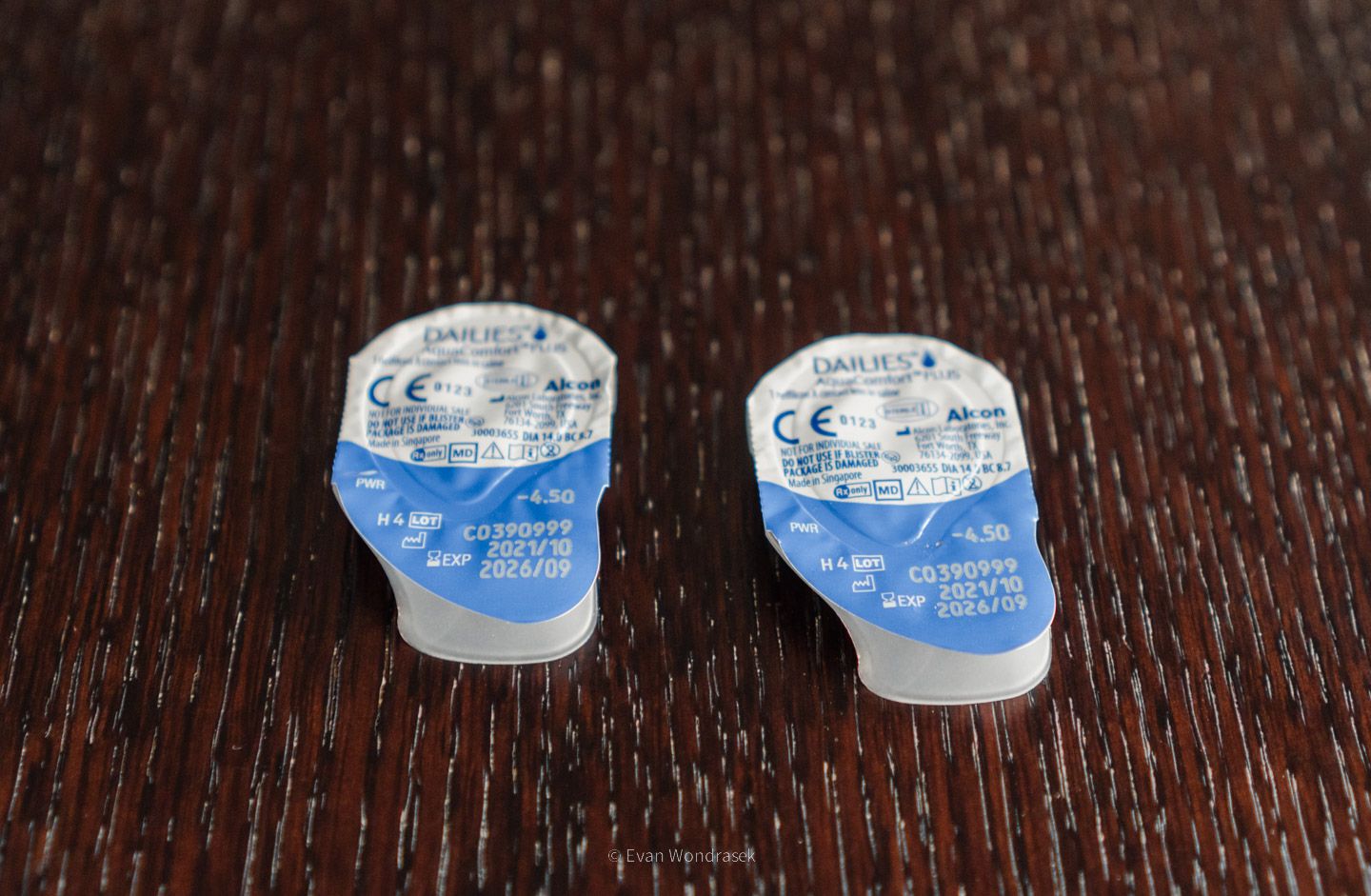
Spare Contact Lenses (2x)
I'm pretty nearsighted, and if I was to lose a contact lens (or worse, both) during a ride, I wouldn't be able to safely continue riding. I always carry one extra set of contact lenses in my saddle bag, just in case.
What I'm not carrying yet (but should)
Although I think I have most of the essentials for dealing with basic roadside repairs, there are a few things I'm not yet carrying but definitely should.
First Aid: Even though I'm low on space, I think I could easily include a few band-aids, a piece of gauze and a few strips of tape, and an antiseptic wipe – these would be great to have in the event of a simple injury.
Cash: I always ride with my phone and wallet, so I'm not super worried about not being able to pay for something while out on the road (e.g. food, snacks, Uber, etc.), but it'd be smart to have a small amount of cash in my saddle bag just in case I forgot my wallet and needed some money in a pinch. Plus, I could finally join that club of cool people who use dollar bills to repair gashes in their tires.
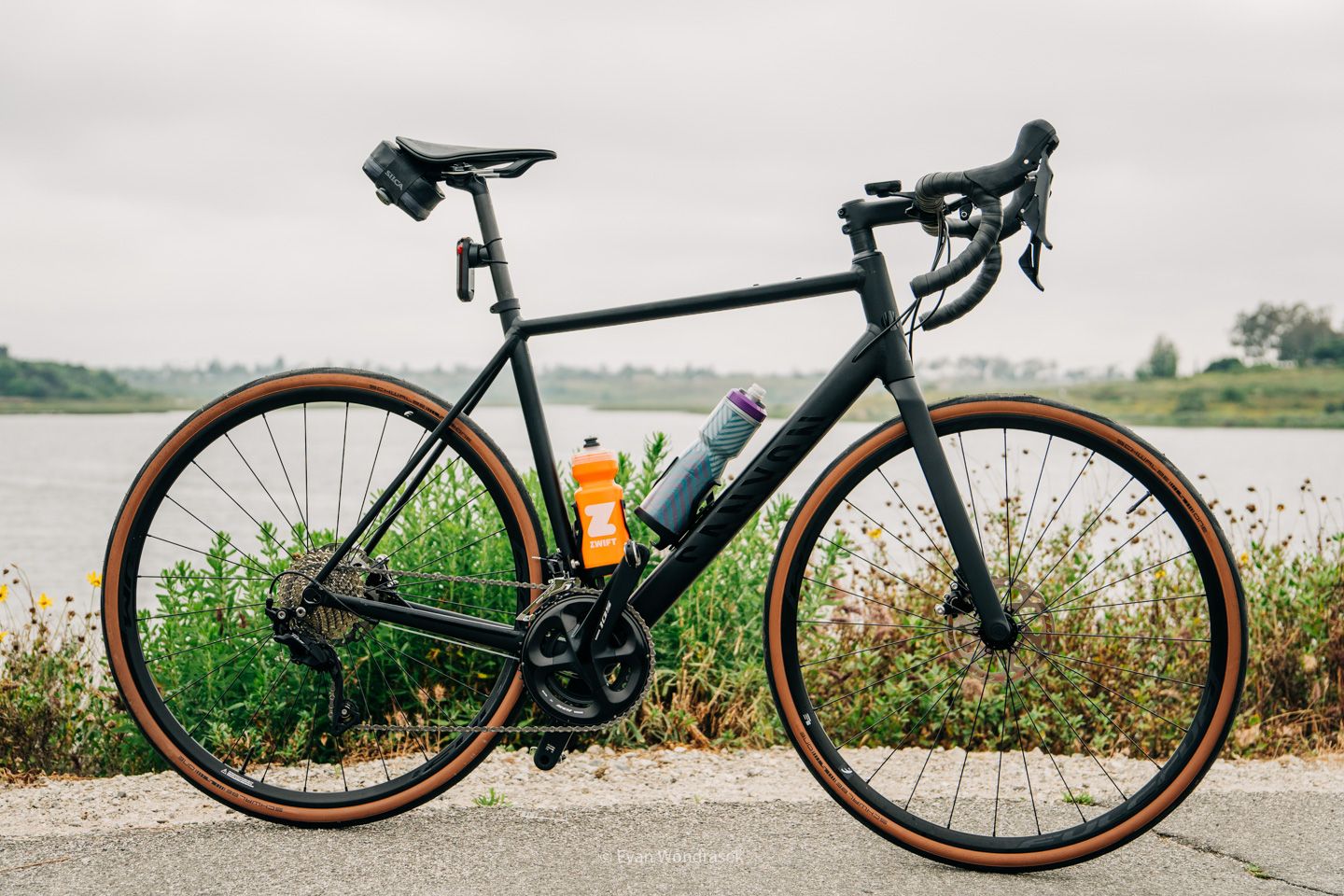
Retired Gear
Saddle Bag: Silca Mattone Seat Pack
Update, October 2024: I'm retiring my Silca Mattone seat pack in favor of the KOM Cycling saddle bag. The Silca seat pack did nothing wrong - I had zero complaints about it and it was perfect for my needs. But I recently purchased a bike maintenance stand, and it was somewhat cumbersome to mount my bike by its seat post because of my radar tail light, and I found that with the KOM Cycling saddle bag I was able to mount the radar tail light directly on my saddle bag, which was super appealing because it completely freed up my seat post. Do I still recommend the Silca Mattone saddle bag? Absolutely yes.
Original post: I wanted a small, low-profile saddle bag that was large enough to carry just the essentials, noting that my longest rides thus far are around 20 miles (and I'm willing to call an Uber or my wife if I have a more serious issue). The Silca Mattone Seat Pack was just big enough to fit the things I wanted to carry, and the BOA closure cinches up nice and tight so the bag doesn't move at all while I'm riding. It's also waterproof, but that wasn't a huge factor for me because I'm very much a fair weather rider.
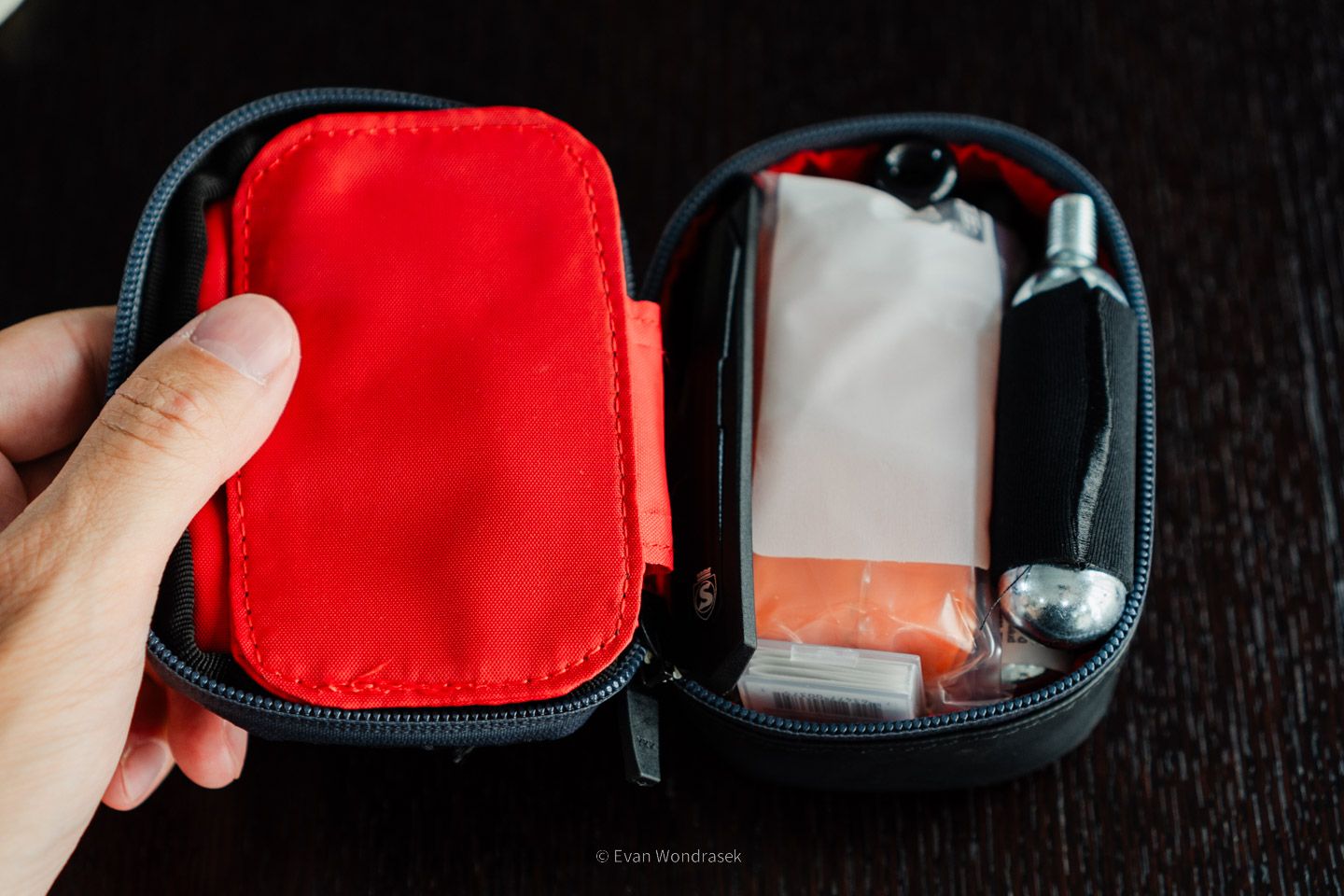
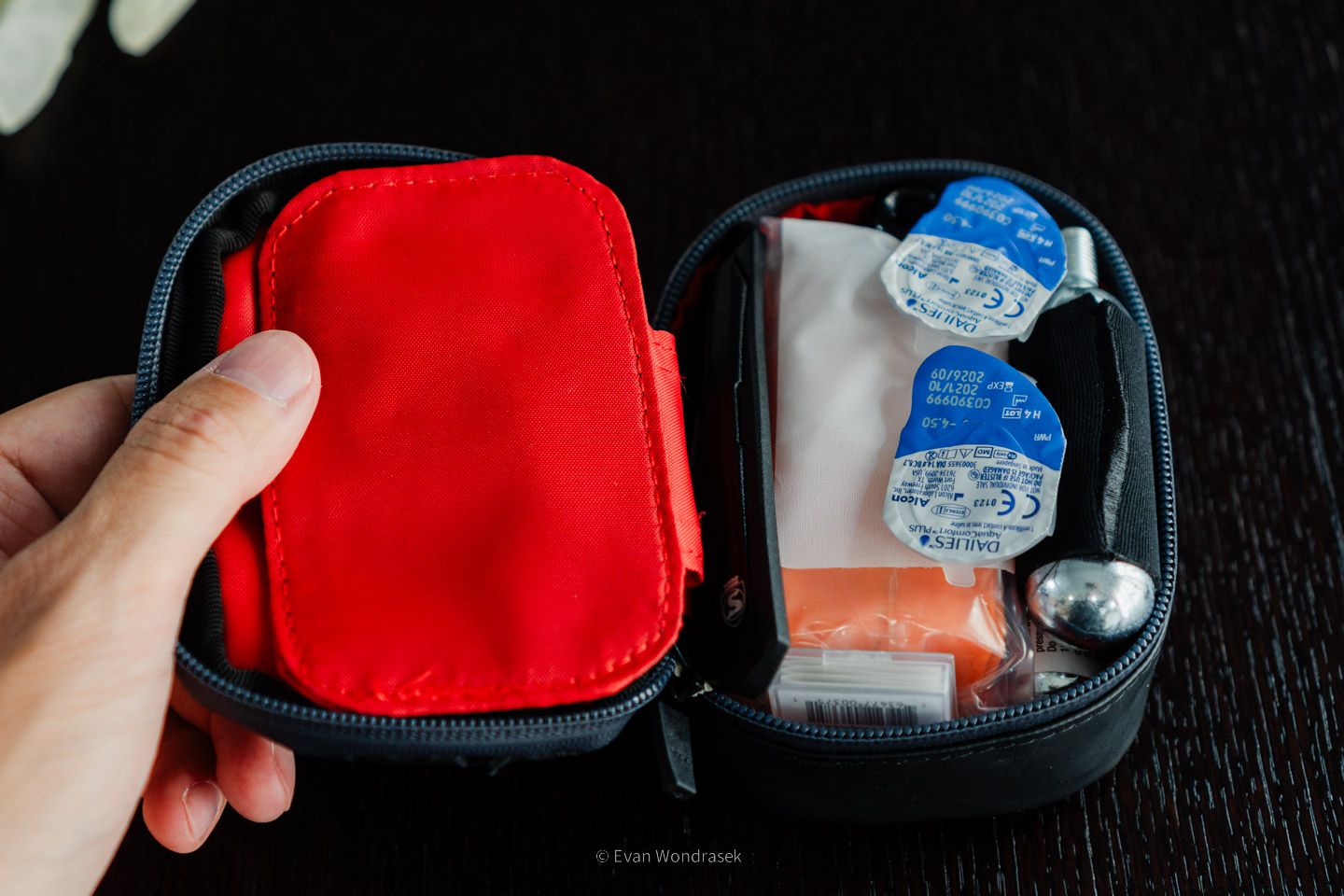
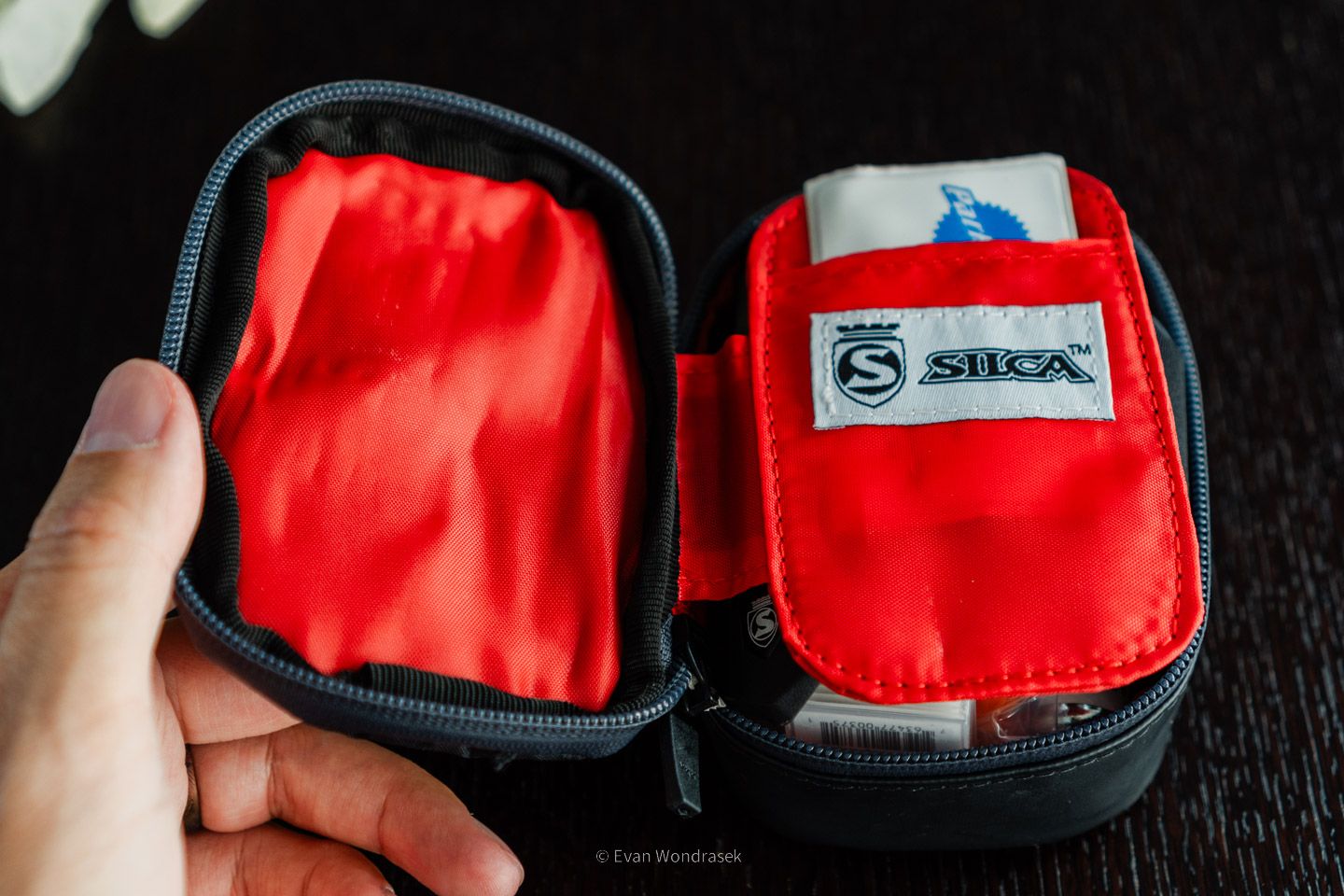
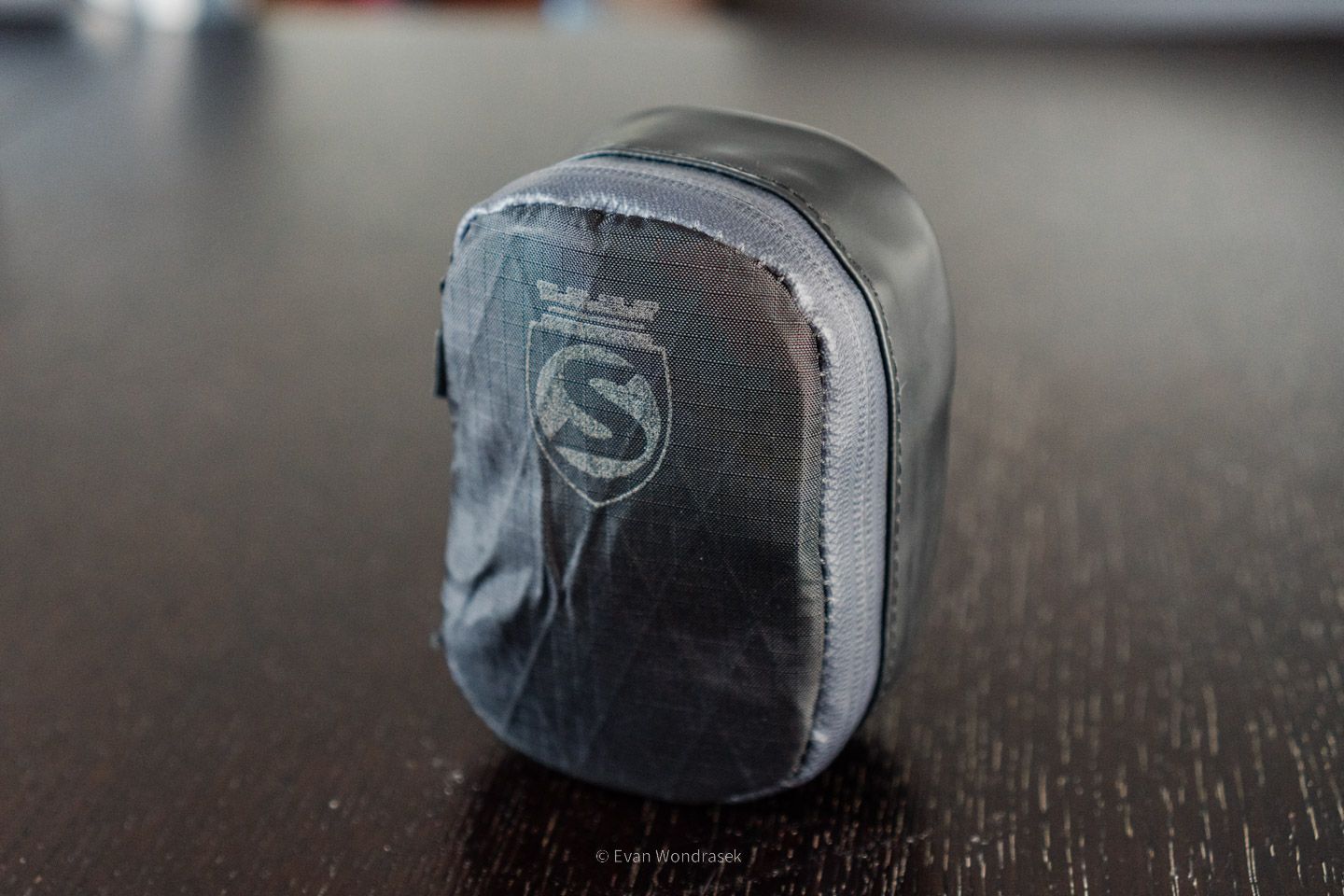
Various stages of loading up my Silca Mattone saddle bag.
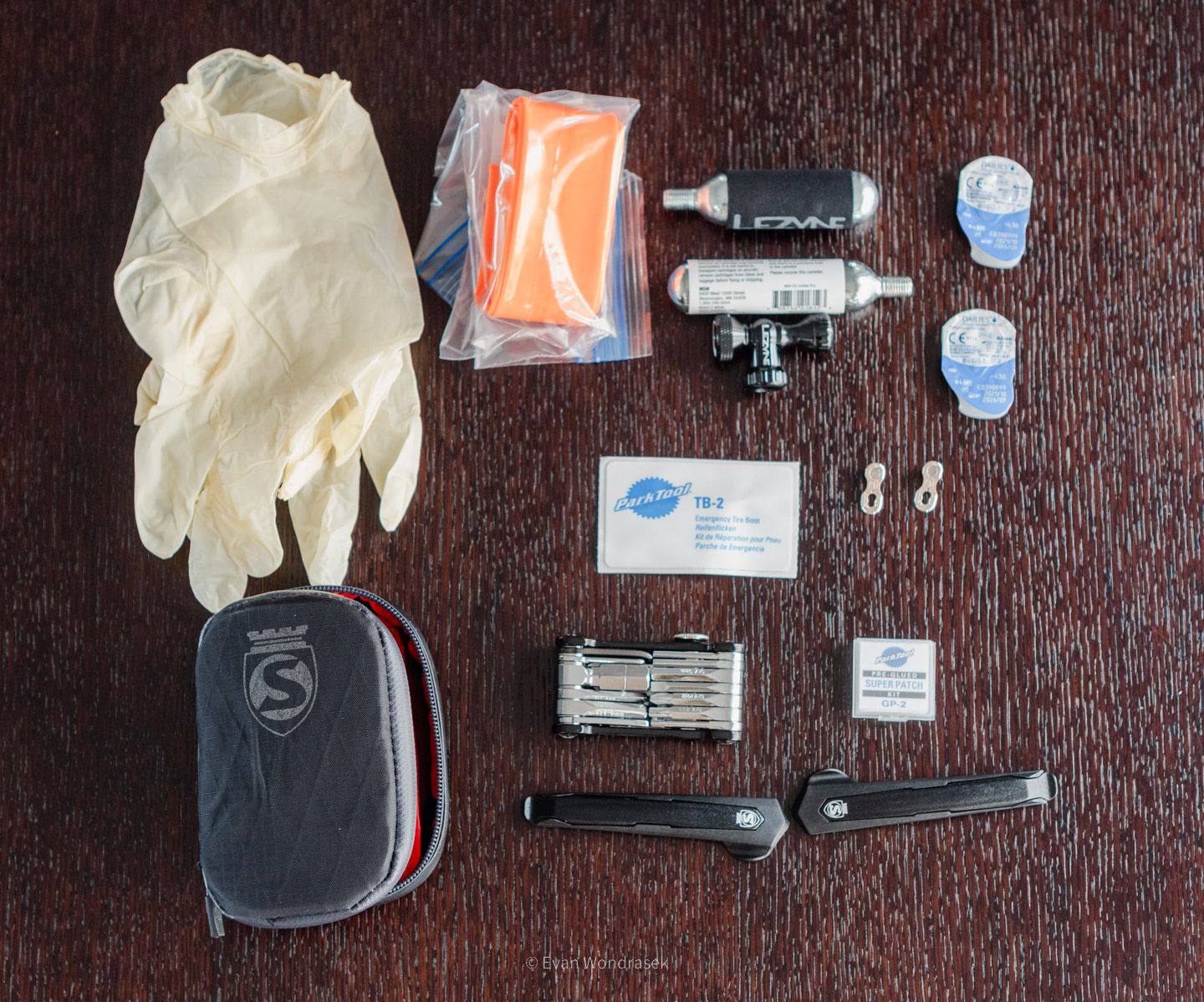
If you found this post useful, you can check out the other posts in my Question and Answer series, or subscribe to my newsletter (it's free!).
